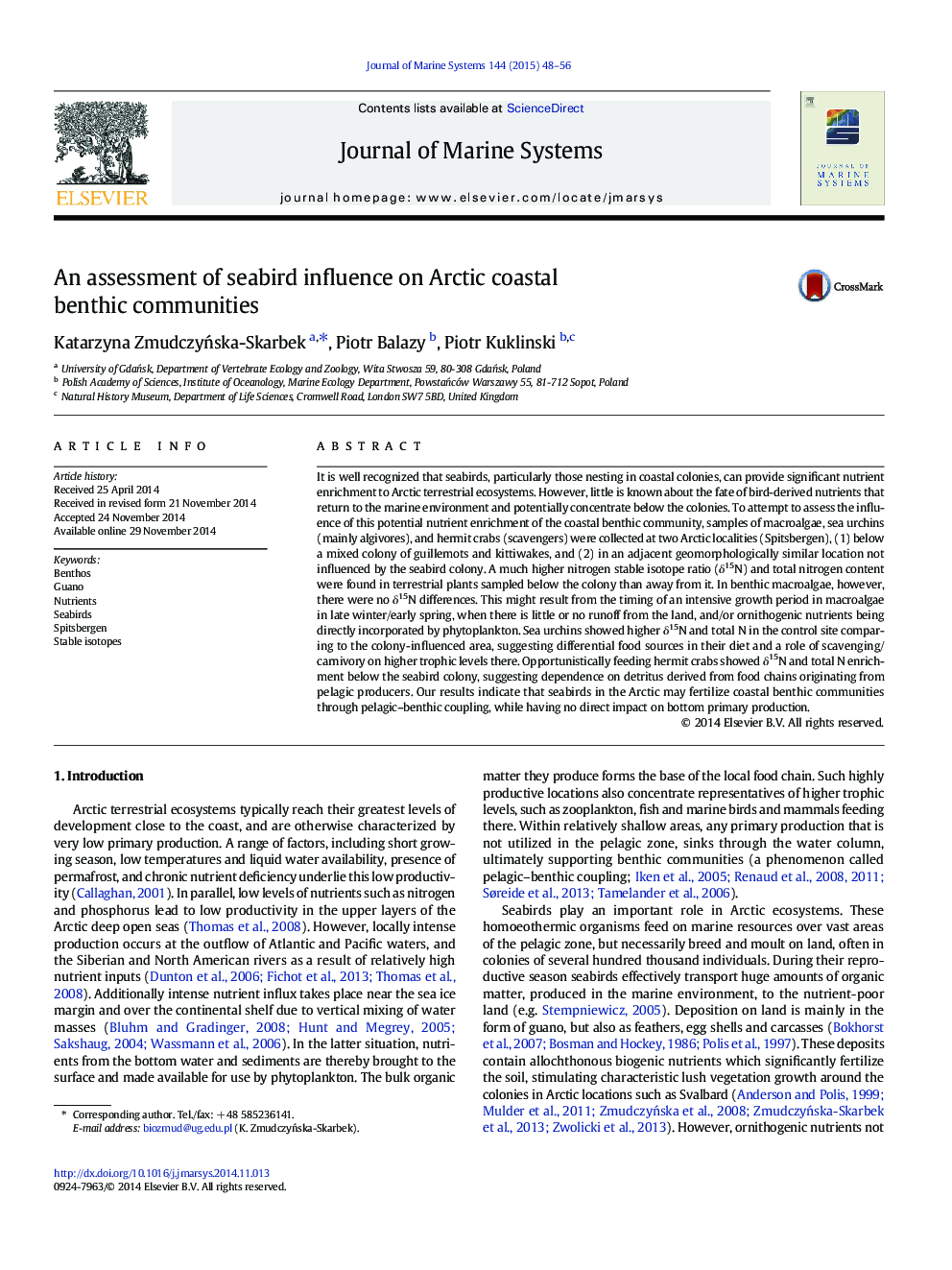| کد مقاله | کد نشریه | سال انتشار | مقاله انگلیسی | نسخه تمام متن |
|---|---|---|---|---|
| 6386810 | 1627285 | 2015 | 9 صفحه PDF | دانلود رایگان |
- In the Arctic, ornithogenic nutrients are not fully used on land and may be available for the nearshore marine organisms.
- Benthic macroalgae do not show clear ornithogenic nutrient enrichment.
- Sea urchins' diet is highly differentiated and may comprise of higher-quality food of animal origin.
- Hermit crabs are influenced by seabirds possibly through pelagic-benthic coupling.
- Seabird influence on coastal benthic environment is less pronounced than on land.
It is well recognized that seabirds, particularly those nesting in coastal colonies, can provide significant nutrient enrichment to Arctic terrestrial ecosystems. However, little is known about the fate of bird-derived nutrients that return to the marine environment and potentially concentrate below the colonies. To attempt to assess the influence of this potential nutrient enrichment of the coastal benthic community, samples of macroalgae, sea urchins (mainly algivores), and hermit crabs (scavengers) were collected at two Arctic localities (Spitsbergen), (1) below a mixed colony of guillemots and kittiwakes, and (2) in an adjacent geomorphologically similar location not influenced by the seabird colony. A much higher nitrogen stable isotope ratio (δ15N) and total nitrogen content were found in terrestrial plants sampled below the colony than away from it. In benthic macroalgae, however, there were no δ15N differences. This might result from the timing of an intensive growth period in macroalgae in late winter/early spring, when there is little or no runoff from the land, and/or ornithogenic nutrients being directly incorporated by phytoplankton. Sea urchins showed higher δ15N and total N in the control site comparing to the colony-influenced area, suggesting differential food sources in their diet and a role of scavenging/carnivory on higher trophic levels there. Opportunistically feeding hermit crabs showed δ15N and total N enrichment below the seabird colony, suggesting dependence on detritus derived from food chains originating from pelagic producers. Our results indicate that seabirds in the Arctic may fertilize coastal benthic communities through pelagic-benthic coupling, while having no direct impact on bottom primary production.
Journal: Journal of Marine Systems - Volume 144, April 2015, Pages 48-56
